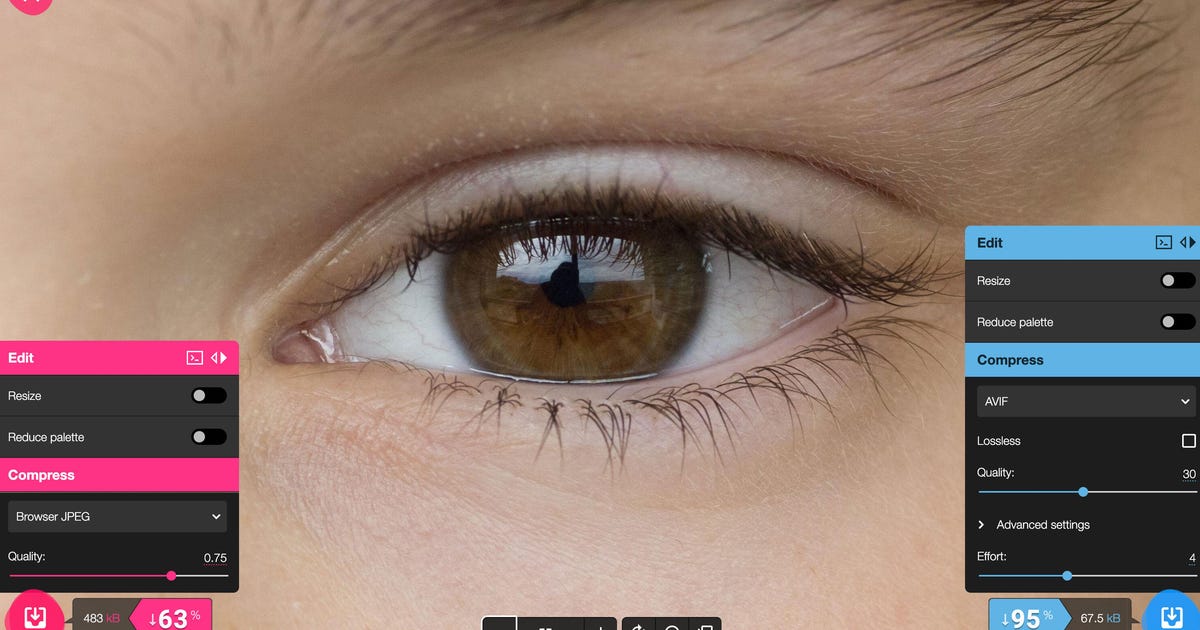
Apple’s Safari web browser will be able to display AVIF image files with the arrival of iOS 16 and MacOS Ventura this fall, part of an industry effort to speed up the web by shrinking file sizes.
The AVIF file format, which has already been embraced by Google’s Chrome and Mozilla’s Firefox browsers, reduces size with a more advanced determination of which photo details to keep or discard.
The smaller files render more quickly in browsers, speeding up the experience of internet surfers. Smaller photo sizes also ease the pain of monthly data caps.
Apple’s support for the format emerged in Apple’s Safari Technical Preview test browser. Jen Simmons, an Apple web developer evangelist, tweeted that AVIF support will arrive in Apple’s next operating system versions.
Apple builds video, audio and image format support into its operating systems, so it’s possible other software could benefit from AVIF abilities, too. Support in iOS and MacOS could ease AVIF use for situations like viewing image thumbnails in video streaming apps or downloaded photos in Apple’s Preview tool.
AVIF, developed by the Alliance for Open Media, can dramatically shrink photos compared to other file formats. Google found AVIF file sizes are about half that of JPEGs at the same quality. Netflix likes AVIF’s “superior compression efficiency” and its support for HDR imagery.
Apple didn’t respond to requests for comment.
Adding new file formats to the web and tools to your smartphone camera app is a difficult endeavor. The JPEG format has been universally supported since its introduction in 1992 and offers enough speed and quality to make it hard to unseat. AVIF is also vying with JPEG XL, WebP 2 and HEIC, among other alternatives.
But broad browser support is a critical success.
“We are proud to see AOM’s AVIF has gained increasing support across web media platforms and browsers,” said John Simmons, Alliance for Open Media’s executive director.
Also happy: others who’d worked on AVIF support, like former Mozilla Firefox developer Andreas Bovens. “I remember when we started having conversations about AVIF at Mozilla and then shipped experimental support,” Bovens tweeted Tuesday. “Amazing to see it gain wide adoption!”
Microsoft doesn’t support AVIF in its Edge browser, but on Windows offers an AVIF extension for Edge.
AVIF is short for AV1 Image File Format, which reflects its origins in the AV1 video compression technology. The photo and video formats are both available royalty free — a potentially big advantage over alternatives like HEVC video and its derivative photo format, HEIC.
The royalty-free requirements, though, are also at the heart of a European Union preliminary investigation into AOM’s AV1 licensing terms, Reuters reported.
AOM argues the terms help competition, though, not hinder it.
“Our goal with AV1 and AVIF has always been to leverage AOM’s royalty-free technology to allow more web platforms, browsers and users to stream video and images at lower costs and higher quality,” Simmons said. “By lowering the financial barrier to market entry,” more companies, in particular startups and small to medium-sized companies, can build new products and services, he said.
Apple’s support is a major boost for AVIF. It means web developers can embrace AVIF’s benefits without having to worry as much about falling back on another image format when AVIF isn’t an option.
If you’re curious about AVIF’s file sizes and image quality, you can try it out on your own photos using the Squoosh image compression comparison tool.
